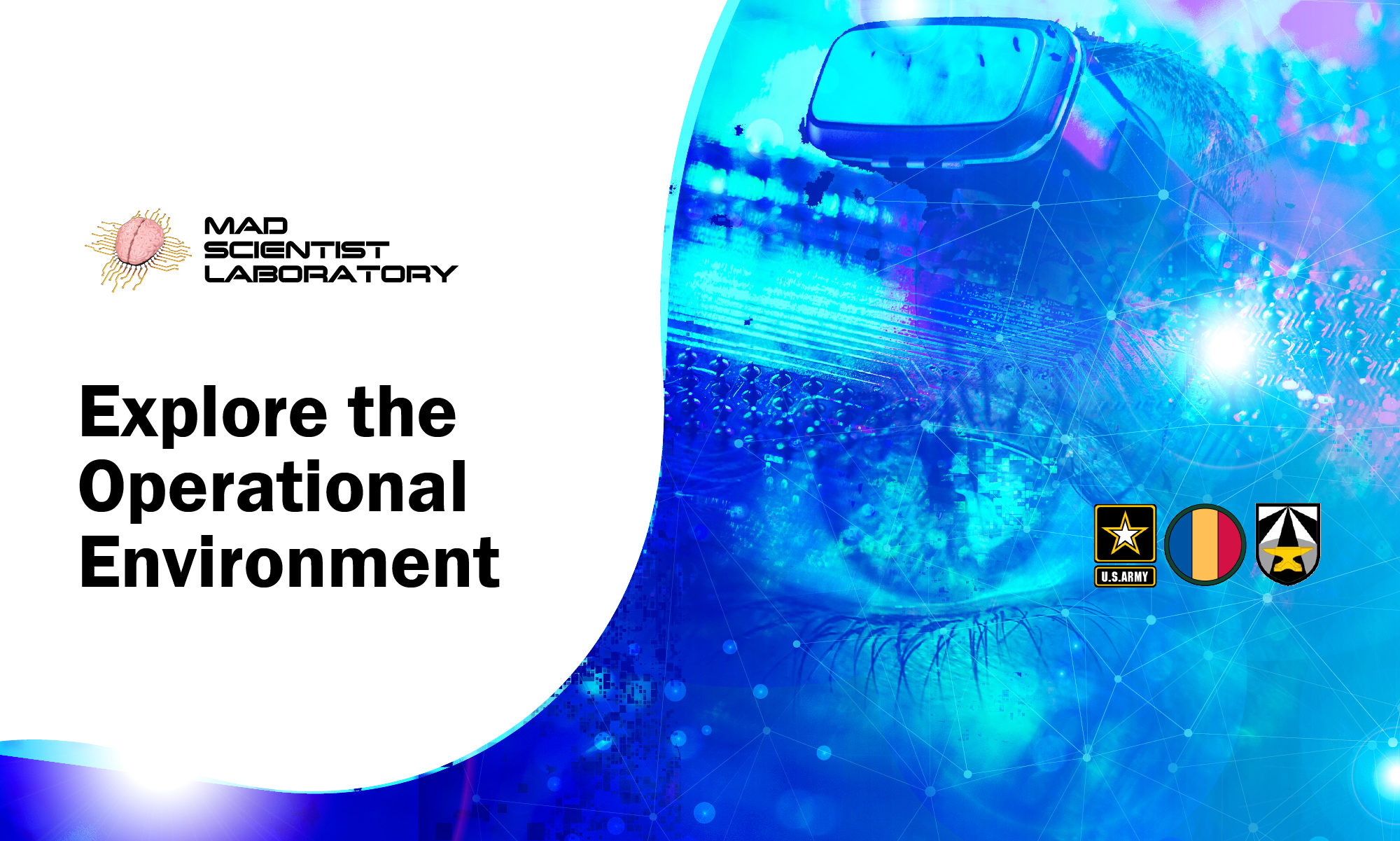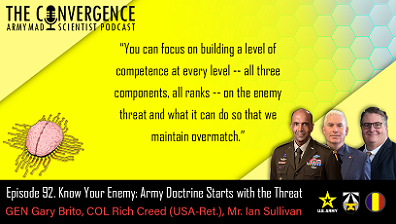“You can focus on building a level of competence at every level — all three components, all ranks — on the enemy threat and what it can do so that we maintain overmatch.”
[Editor’s Note: Grizzled readers of the Mad Scientist Laboratory will recall their well-thumbed copies of the forty-year-old FM 100-2 series, The Soviet Army. U.S. Army Soldiers and Leaders from the Cold War-era were expected to know their Soviet adversaries’ Operations and 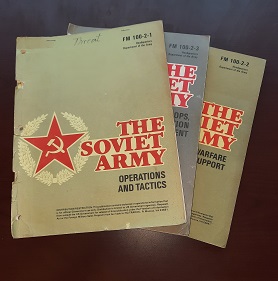 Tactics; Troops, Organization, and Equipment; and Specialized Warfare and Rear Area Support cold — as international tensions and crises could (and frequently did!) escalate to trigger alerts at a moment’s notice, sending units racing forward from their garrisons to occupy their GDP positions… ready and prepared to counter Soviet and their Warsaw Pact allies’ forces advancing across the Inner German Border (IGB)!
Tactics; Troops, Organization, and Equipment; and Specialized Warfare and Rear Area Support cold — as international tensions and crises could (and frequently did!) escalate to trigger alerts at a moment’s notice, sending units racing forward from their garrisons to occupy their GDP positions… ready and prepared to counter Soviet and their Warsaw Pact allies’ forces advancing across the Inner German Border (IGB)!
Flash forward to today’s Army, where knowledge of the Operational Environment (OE) and the five National Defense Strategy Threats — China, Russia, North Korea, Iran, and Violent Extremist Organizations (VEOs) — remain critical competencies within the Profession of Arms.
In this episode of The Convergence podcast, Army Mad Scientist partnered with the Breaking Doctrine podcast from the Combined Arms Doctrine Directorate, U.S. Army Combined Arms Center (CAC), to co-host a fascinating discussion with General Gary M. Brito, Commanding General, U.S. Army Training and Doctrine Command (TRADOC), Colonel Rich Creed (USA-Ret.), Director, Combined Arms Doctrine Directorate, U.S. Army CAC, and Mr. Ian Sullivan, Deputy Chief of Staff Intelligence, TRADOC G-2, exploring how understanding the OE and knowing Threat Doctrine remain core Soldier and Leader competencies, underpinning how the Army will fight and win decisively in the 21st century battlespace — Read on!]
[If the podcast dashboard is not rendering correctly for you, please click here to listen to the podcast.]
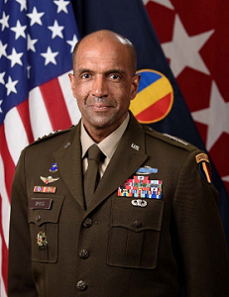 General Gary M. Brito assumed duties as the 18th Commanding General, United States Army TRADOC, on September 8, 2022. He is responsible for building and sustaining a highly trained, disciplined, and fit Army by acquiring the best people, training the most lethal Soldiers, developing the most professional leaders, guiding the Army’s culture, and shaping the future force.
General Gary M. Brito assumed duties as the 18th Commanding General, United States Army TRADOC, on September 8, 2022. He is responsible for building and sustaining a highly trained, disciplined, and fit Army by acquiring the best people, training the most lethal Soldiers, developing the most professional leaders, guiding the Army’s culture, and shaping the future force.
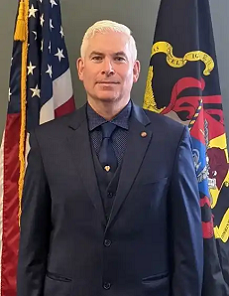 COL Rich Creed was commissioned an Armor officer in 1989 from the U.S. Military Academy and retired from active duty in 2021 after a variety of command and staff assignments from platoon to four-star level. Mr. Creed has been the Director of the Combined Arms Doctrine Directorate at Fort Leavenworth since December 2016, where he helped write and edit the last two versions of the Army’s capstone operations publication, FM 3-0. He was one of the authors and editors of ADP 6-22 (Mission Command: C2 of Army Forces) and ADP 3-13 (Information).
COL Rich Creed was commissioned an Armor officer in 1989 from the U.S. Military Academy and retired from active duty in 2021 after a variety of command and staff assignments from platoon to four-star level. Mr. Creed has been the Director of the Combined Arms Doctrine Directorate at Fort Leavenworth since December 2016, where he helped write and edit the last two versions of the Army’s capstone operations publication, FM 3-0. He was one of the authors and editors of ADP 6-22 (Mission Command: C2 of Army Forces) and ADP 3-13 (Information).
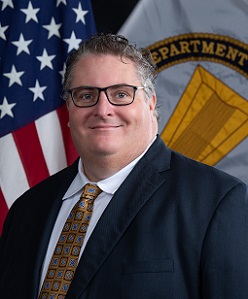 Mr. Ian Sullivan is the Deputy Chief of Staff Intelligence, TRADOC G-2. He holds a BA from Canisius University in Buffalo, New York, an MA from Georgetown University’s BMW Center for German and European Studies in Washington, D.C., and was a Fulbright Fellow at the Universität Potsdam in Potsdam, Germany. A career civilian intelligence officer, Mr. Sullivan has served with the Office of Naval Intelligence; Headquarters, U.S. Army Europe and Seventh Army; the Office of the Director of National Intelligence (ODNI) at the National Counterterrorism Center; the Central Intelligence Agency; and TRADOC. He is a member of the Defense Intelligence Senior Executive Service and was first promoted to the senior civilian ranks in 2013 as a member of the ODNI’s Senior National Intelligence Service.
Mr. Ian Sullivan is the Deputy Chief of Staff Intelligence, TRADOC G-2. He holds a BA from Canisius University in Buffalo, New York, an MA from Georgetown University’s BMW Center for German and European Studies in Washington, D.C., and was a Fulbright Fellow at the Universität Potsdam in Potsdam, Germany. A career civilian intelligence officer, Mr. Sullivan has served with the Office of Naval Intelligence; Headquarters, U.S. Army Europe and Seventh Army; the Office of the Director of National Intelligence (ODNI) at the National Counterterrorism Center; the Central Intelligence Agency; and TRADOC. He is a member of the Defense Intelligence Senior Executive Service and was first promoted to the senior civilian ranks in 2013 as a member of the ODNI’s Senior National Intelligence Service.
Army Mad Scientist and Breaking Doctrine sat down with GEN Brito and Messrs. Creed and Sullivan to explore competence in the Army Profession, the importance of Threat Doctrine, and how we can ensure our Army is prepared for the next fight. The following bullet points highlight key insights from our conversation:
-
-
- Our doctrine works because it starts with the enemy. It drives our thought processes, our operations, and even our on-going modernization. Competence
 as an Army professional includes educating at every echelon and instilling a strong baseline understanding of the threats we face: China, Russia, North Korea, Iran, and Violent Extremist Organizations (VEOs).
as an Army professional includes educating at every echelon and instilling a strong baseline understanding of the threats we face: China, Russia, North Korea, Iran, and Violent Extremist Organizations (VEOs).
- Our doctrine works because it starts with the enemy. It drives our thought processes, our operations, and even our on-going modernization. Competence
-
-
-
- Aside from Professional Military Education (PME), Soldiers should be expected to rely on their own self-development – taking what was learned in PME and applying
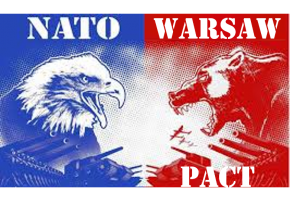 it to what is being observed on the battlefield, in the news, or regarding historical accounts. Leveraging historical fiction – Team Yankee or Red Storm Rising, for example – can contextualize the threat, make it more real, and help facilitate understanding.
it to what is being observed on the battlefield, in the news, or regarding historical accounts. Leveraging historical fiction – Team Yankee or Red Storm Rising, for example – can contextualize the threat, make it more real, and help facilitate understanding.
- Aside from Professional Military Education (PME), Soldiers should be expected to rely on their own self-development – taking what was learned in PME and applying
-
-
-
- The Operational Environment (OE) is more complex and dynamic now than thirty years ago because it has more and varied actors – nation states, groups of nation states, trans-national alliances, large non-governmental organizations, VEOs, and super-empowered individuals. This means
 that all aspects of the DIME spectrum (Diplomatic, Information, Military, Economic) move faster and in a more rapid cycle. This necessitates U.S. Leaders who can accept confusion and discomfort and adapt quickly and dynamically.
that all aspects of the DIME spectrum (Diplomatic, Information, Military, Economic) move faster and in a more rapid cycle. This necessitates U.S. Leaders who can accept confusion and discomfort and adapt quickly and dynamically.
- The Operational Environment (OE) is more complex and dynamic now than thirty years ago because it has more and varied actors – nation states, groups of nation states, trans-national alliances, large non-governmental organizations, VEOs, and super-empowered individuals. This means
-
-
-
- GEN Brito believes that everyone – all Army components and civilian professionals – needs to be “on board” to embrace
 this level of development in their respective skillset and a have true understanding of an enemy’s capabilities. For Soldiers that means PME at Basic Officer Leader Course to the Captains Career Course and through the Command and General Staff College.
this level of development in their respective skillset and a have true understanding of an enemy’s capabilities. For Soldiers that means PME at Basic Officer Leader Course to the Captains Career Course and through the Command and General Staff College.
- GEN Brito believes that everyone – all Army components and civilian professionals – needs to be “on board” to embrace
-
-
-
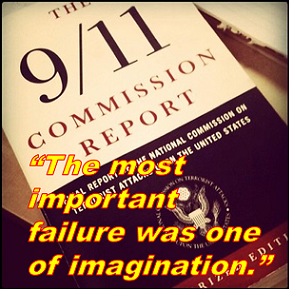 We will never get it exactly right, but if we’re constantly thinking about it, and studying it, we’ll never be surprised by the adversaries’ thought process. We must be able to close our eyes and visualize the fight over time and space. We cannot afford another failure of imagination.
We will never get it exactly right, but if we’re constantly thinking about it, and studying it, we’ll never be surprised by the adversaries’ thought process. We must be able to close our eyes and visualize the fight over time and space. We cannot afford another failure of imagination.
-
Help Army Mad Scientist visualize this fight — we want to crowdsource the intellect of the Nation (i.e., you — our community of action!) through our Operational Environment Wicked Problems Writing Contest.
All entries should address the following topic:
How have innovations in asymmetric warfare impacted modern large scale and other combat operations, and what further evolutions could take place, both within the next 10 years and on towards mid-century?
We are accepting three types of submissions:
-
-
- 1500-word Non-Fiction Essay
-
-
-
- 1500-word Fictional Intelligence (FICINT) Story
-
-
-
- Hybrid 1500-word submission incorporating a short FICINT vignette, with a Non-Fiction Essay expounding on the threat capabilities described in the vignette
-
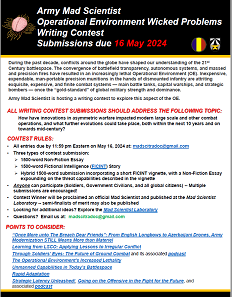 Anyone can participate (Soldiers, Government Civilians, and all global citizens) — Multiple submissions are encouraged!
Anyone can participate (Soldiers, Government Civilians, and all global citizens) — Multiple submissions are encouraged!
All entries are due NLT 11:59 pm Eastern on May 16, 2024 at: madscitradoc@gmail.com
Click here for additional information on this contest — we look forward to your participation!
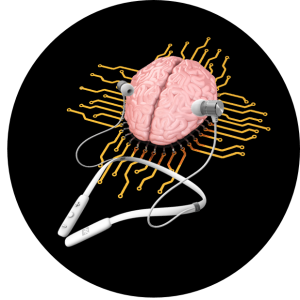 Stay tuned to the Mad Scientist Laboratory for our next episode of The Convergence podcast on 14 March 2024, when we sit down with LTC Kenneth Hardy, TRADOC Liaison Officer to the Israel Defense Forces to discuss his observations of the initial HAMAS attacks on Israel on 07 October 2023, insights into the larger Israel-HAMAS conflict, and how it is informing the U.S. Army about future conflicts in the 21st century battlespace.
Stay tuned to the Mad Scientist Laboratory for our next episode of The Convergence podcast on 14 March 2024, when we sit down with LTC Kenneth Hardy, TRADOC Liaison Officer to the Israel Defense Forces to discuss his observations of the initial HAMAS attacks on Israel on 07 October 2023, insights into the larger Israel-HAMAS conflict, and how it is informing the U.S. Army about future conflicts in the 21st century battlespace.
If you enjoyed this post, check out the TRADOC G-2’s Operational Environment Enterprise public facing page, brimming with threat content, including:
Our China Landing Zone, full of information regarding our pacing challenge, including ATP 7-100.3, Chinese Tactics, BiteSize China weekly topics, People’s Liberation Army Ground Forces Quick Reference Guide, and our thirty-plus snapshots captured to date addressing what China is learning about the Operational Environment from Russia’s war against Ukraine (note that a DoD Common Access Card [CAC] is required to access this last link).
… our Russia Landing Zone, including the BiteSize Russia weekly topics. If you have a CAC, you’ll be especially interested in reviewing our weekly RUS-UKR Conflict Running Estimates and associated Narratives, capturing what we have been learning about the contemporary Russian way of war in Ukraine over the past two years and the ramifications for U.S. Army modernization across DOTMLPF-P
… and our Iran and North Korea Products pages, with additional threat information
Also review the following Mad Scientist Laboratory threat content:
The Most Consequential Adversaries and associated podcast, with GEN Charles A. Flynn
Volatility in the Pacific: China, Resilience, and the Human Dimension and associated podcast, with General Robert Brown (USA-Ret.)
How China Fights and associated podcast
How Russia Fights 2.0 and associated podcast
Learning from LSCO: Applying Lessons to Irregular Conflict, by Ian Sullivan and Kate Kilgore
Three Dates, Three Windows, and All of DOTMLPF-P, China and Russia: Achieving Decision Dominance and Information Advantage, “No Option is Excluded” — Using Wargaming to Envision a Chinese Assault on Taiwan, and Would You Like to Play a Game? Wargaming as a Learning Experience and Key Assumptions Check by Ian Sullivan
Flash-Mob Warfare: Whispers in the Digital Sandstorm (Parts 1 and 2), by Dr. Robert E. Smith
China: Building Regional Hegemony and China 2049: The Flight of a Particle Board Dragon, the comprehensive report from which this post was excerpted
China’s PLA Modernization through the DOTMLPF-P Lens, by Dr. Jacob Barton
Intelligentization and the PLA’s Strategic Support Force, by Col (s) Dorian Hatcher
“Intelligentization” and a Chinese Vision of Future War
Competition and Conflict in the Next Decade
Disrupting the “Chinese Dream” – Eight Insights on how to win the Competition with China
Competition in 2035: Anticipating Chinese Exploitation of Operational Environments
Disinformation, Revisionism, and China with Doowan Lee and associated podcast
The PLA and UAVs – Automating the Battlefield and Enhancing Training
A Chinese Perspective on Future Urban Unmanned Operations
China: “New Concepts” in Unmanned Combat and Cyber and Electronic Warfare
The PLA: Close Combat in the Information Age and the “Blade of Victory”
Disclaimer: The views expressed in this blog post do not necessarily reflect those of the U.S. Department of Defense, Department of the Army, Army Futures Command (AFC), or Training and Doctrine Command (TRADOC).
